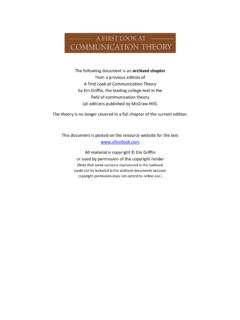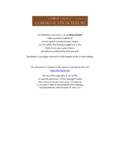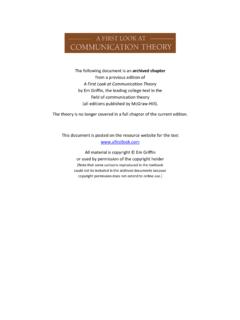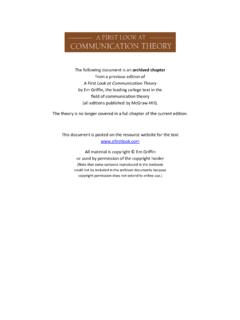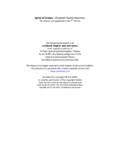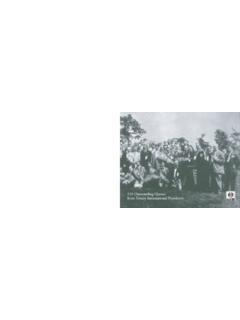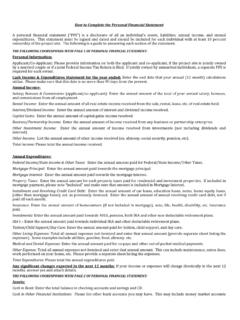Transcription of The following document is an archived chapter - A …
1 The following document is an archived chapter from a previous edition of A First Look at Communication Theory by Em Griffin, the leading college text in the field of communication theory (all editions published by McGraw-Hill). The theory is no longer covered in a full chapter of the current edition. This document is posted on the resource website for the text All material is copyright Em Griffin or used by permission of the copyright holder (Note that some cartoons reproduced in the textbook could not be included in the archived documents because copyright permission does not extend to online use.). chapter .
2 10. hierarchy of needs of Abraham Maslow Think of someone who fits the following description: loving, fair, realistic, relaxed, self-sufficient, spontaneous, creative, nice. Make sure he or she also has an honest directness, a playful spirit, a history of successful risk taking, and a way of moving through life that seems effortless. This is the kind of extraordinary person Brandeis University psychologist Abraham Maslow considered when he devised a theory of motivation fifty years ago. They are a rare breed-the Olympic medal winners of the human race. To Maslow, it made sense to examine the finest specimens of the species.
3 So in order to discover exemplary qualities in the human race, he studied the lives of Abraham Lincoln, Albert Einstein, Jane Addams, Eleanor Roosevelt, Frederick Douglass, Martin Buber, Albert Schweitzer, and a few dozen others representing his definition of the brightest and the best. THE THIRD FORCE: A REACTION TO PESSIMISTIC DETERMINISM. Maslow realized that his method was a radical departure from the two standard psychological approaches to the study of human nature. The Freu- dian psychoanalytic school emphasized people's destructive tendencies. Con- sistent with the survival-of-the-fittest views of Charles Darwin, Freud saw no moral difference between people and animals.
4 We may walk upright, but there's no reason to believe we'll act that way. Maslow thought that Freud's pessimism was a logical result of looking at the dark side of the human psyche. The study of crippled, stunted, immature, and unhealthy speci- mens can yield only a cripple psychology and a cripple philosophy. i The behaviorism of B. F. Skinner offers little more hope. Since students of motivation spend most of their time studying the behavior of white rats, it's no wonder they construct need models based solely on hunger, thirst, sex, and the avoidance of pain. If we must do animal research, Maslow asked, why not study the playfulness of monkeys or the affectionate loyalty of dogs?
5 He was also critical of behaviorists' tendency to ignore unique characteristics. When they finally get around to looking at people, they lop off individual differences and reduce warm bodies to cold statistical averages. 124. hierarchy OF needs 125. Maslow's hierarchy of needs offers an alternative to what he saw as the depressing determinism of both Freud and Skinner. To call attention to the differences between his optimistic view and their denial of human freedom and dignity, he labeled his approach the Third Force. Maslow was con- vinced that when scientists finally examined the noble examples of human development, they would discover that people are basically trustworthy, self- protecting, and self-governing.
6 Our innate tendency is toward growth; we are even capable of love. Maslow's theory is bullish on the human race. DEFICIENCY needs MUST BE SATISFIED FOR GROWTH TO OCCUR. Maslow was not stupid. He could read the newspaper as well as anybody else and was saddened by the daily reports of inhuman deceit and violence. But that was exactly his point. Lying, cheating, stealing, and murder are not what he thought human nature was meant to be. These are aberrant behaviors that occur when legitimate human needs are thwarted. To borrow a line spoken by a gang member to Officer Krupke in the 1962 Academy Award winning movie West Side Story, I'm depraved on account of I'm deprived.
7 2. According to Maslow's theory, there are four types of needs that must be satisfied before a person can act unselfishly. As Figure shows, the needs are arranged in a hierarchical order. The upward climb is made by satisfying one set of needs at a time. The most basic drives are physiological. After that comes the need for safety, then the desire for love, and then the quest for 1 PHYSIOLOGICAL \. FIGURE Maslow's hierarchy of needs (Adapted from Gable, The Third Force.). 126 ZNTRAPERSONAL COMMUNlCATlON. esteem. Note the softening of terminology used to describe the move up the ladder. We're driven to satisfy the lower needs , but we're drawn to meet the higher ones.
8 Maslow referred to the four lower needs as deficiency needs because their lack creates a tension within us. He saw nothing wrong with the human desire to scratch where we itch. As long as we can work to satisfy the cravings, we're moving toward growth. It's when a repressive society or a warped individual curtails our freedom to satisfy our needs that we become ill. Satisfying needs is healthy. Blocking gratification makes us sick. The urge to fulfill needs is potent but not overpowering. Maslow thought that the Freudian label instinct overstated the case. Maslow used the term instinctoid to designate a less insistent motivational force.
9 People can resist the pull of physiological, safety, love, and esteem needs , but it's not easy. The instinctoid label also means that these needs are universal urges and not created by culture, as the behaviorist would claim. Although everyone has the same set of the needs , our ways of fulfilling those needs can be different. You could meet your need to belong (love and be loved) by going to a party, whereas your roommate might go for a quiet walk with a friend. Despite these different means of gratification, our common desire for love makes us brothers or sisters under the skin. LOWER needs TAKE PRIORITY UNTIL MET.
10 There is nothing unique about Maslow's focus on physical, safety, love, and esteem needs . Other theorists include these four in their lists of basic needs . The genius of the hierarchy is its concept of prepotency. A prepotent need is the one that has the greatest power or influence over our actions. Maslow claimed that everyone has a prepotent need, but the need will differ among individ- uals. You might be motivated by a craving for love, while I may be motivated by a desire for esteem. Which need is prepotent for a given individual? According to Maslow, a person's prepotent need is the lowest unmet need in the pyramid.
